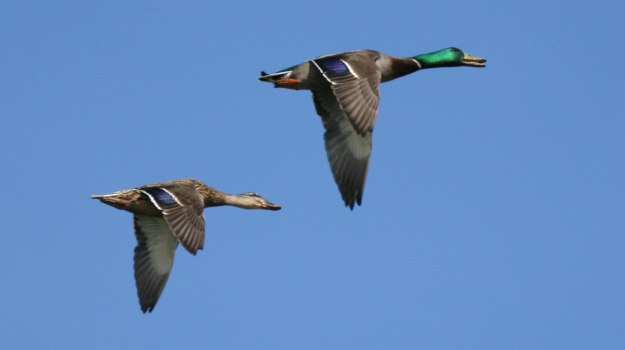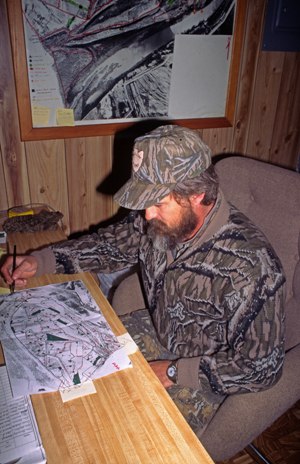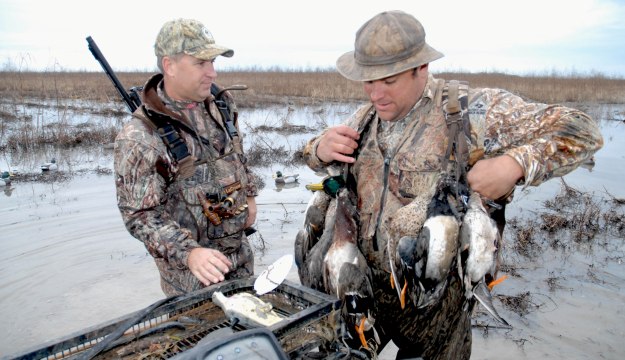How to Find the Ducks Before You Hunt Them

Editor’s Note: Brooks Tinsley of West Point, Mississippi, hunts some of the most heavily hunted waterfowl areas in the nation, but he has been highly successful. We wanted to know what tactics he was using to take ducks in often overcrowded areas on public land.
Mississippi has an abundance of duck-hunting habitat, and the State of Mississippi has some productive public-land waterfowling opportunities. But if you compare the number of acres in Mississippi where hunters can take ducks to states like Missouri, Tennessee, Louisiana and Arkansas, Mississippi pales in comparison to these states and others, particularly in the Midwest. In earlier years, I’d hunt 45 to 60 days on public lands here in Mississippi. But in the last few years, I started to concentrate more of my hunting in Arkansas. However, I still hunt some of the prime waterfowl Mississippi sections throughout the season. Because Mississippi doesn’t have a huge number of public waterfowl areas, over the years, the number of people hunting these duck spots has increased drastically.
 Some of the best public-land hunting in Mississippi is in the Greenwood section of the state. Tallahatchie County has continued to have the most-consistent number of ducks of almost any place in Mississippi. There’s Malmaison public hunting area, Mathews Brake, O’Keefe National Wildlife Refuge and Tallahatchie National Wildlife Refuge. The state also has some WMAs that you can come and go and hunt ducks on, but many of the waterfowl WMAs are now using the draw system to be able to hunt on them. However, if you get drawn, Howard Miller WMA and Mahannah WMA are great WMAs where you can hunt and take waterfowl. If you happen to draw any of these places, you have an excellent chance of having a good waterfowl hunt.
Some of the best public-land hunting in Mississippi is in the Greenwood section of the state. Tallahatchie County has continued to have the most-consistent number of ducks of almost any place in Mississippi. There’s Malmaison public hunting area, Mathews Brake, O’Keefe National Wildlife Refuge and Tallahatchie National Wildlife Refuge. The state also has some WMAs that you can come and go and hunt ducks on, but many of the waterfowl WMAs are now using the draw system to be able to hunt on them. However, if you get drawn, Howard Miller WMA and Mahannah WMA are great WMAs where you can hunt and take waterfowl. If you happen to draw any of these places, you have an excellent chance of having a good waterfowl hunt.
One of the key secrets for waterfowl success on public lands in Mississippi will be your ability to study maps of the region you want to hunt and pick out spots that may be hard for other hunters to get to but appear to be places that ducks naturally will want to be. I use the maps for the WMA, national forest or wildlife refuge that I want to hunt. Then I’ll pull up a Google map of that same area, a couple of GPS maps and aerial photos too of the public land I want to hunt. Then I’ll pick three or four or maybe as many as 10 spots I want to go look at before I hunt there. I’ll study the terrain, the foliage and different ways to get to that spot - scouting before the season.
Most of these waterfowl areas don’t permit hunting after noon. So, I sacrifice a lot of hunting to learn new areas. When I find a spot on these maps that I want to hunt, I’ll usually go to one of those places early and try to take some ducks. But after the first hour or two of legal shooting time, whether I've taken any ducks or not, I’ll leave that area and go scout some of the other spots on my maps. I’ve found that finding where ducks want to hold is much more critical to success than spending time, hoping ducks will come in to your blind.
The men I hunt with all understand that we’ll hunt for a few hours during the morning. Then we’ll all start scouting the rest of the morning to find new and better places to hunt. We’ll also use this technique to learn good places to hunt in Arkansas, just like we use this tactic to find great places to hunt in Mississippi. When we first started hunting Arkansas, we’d spend 80 percent of the time we had to hunt scouting rather than hunting. We learned this strategy from hunting in Mississippi.



























